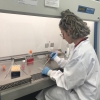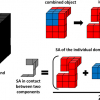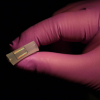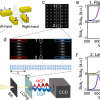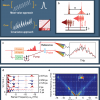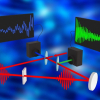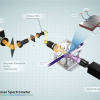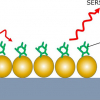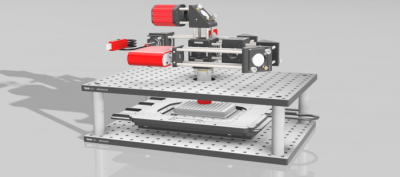
Researchers at the University of Southampton have demonstrated a quick and accurate method to diagnose bacterial infections using a new multi-excitation Raman spectroscopy methodology. The technique has the potential to detect infections in cystic fibrosis patients in minutes rather than days. In future, the simple analysis could be performed on hospital wards to deliver faster and more effective treatment. The approach could also be expanded to target a variety of diseases and counter anti-microbial resistance.
Cystic fibrosis is an inherited condition that causes sticky mucus to build up in the lungs and digestive system. This causes lung infections and problems with digesting food. It affects around 1 in every 10,000 births in the UK. Treatments are available to help reduce the problems caused by the condition. Yet recurring infections still dramatically reduce the quality and length of life. The current methods for diagnosing immediate (acute) and longer-term (chronic) infections are complex and time-consuming in the laboratory. For biofilm infections, it can take days from collecting and processing a patient’s sample to achieving a result. This delays effective treatments and impacts patient outcomes.
A multi-disciplinary team from the University of Southampton and University Hospital Southampton set out to develop a diagnostic tool that would be rapid, accurate and simple-to-use for doctors. They have developed a new chemical analysis technique called multi-excitation Raman spectroscopy. This non-invasive method emits a scattering of multiple colours of light into a patient’s sample. Professor Mahajan continued: “Our new Raman spectroscopy-based method offers many advantages over resource-intensive, culture-based methods, allowing rapid and label-free analysis. It is reagent-less and avoids complex sample-preparation steps with sophisticated equipment. Here, we have developed a method that is highly accurate yet rapid and neither requires nanoscale materials for enhancing signals nor fluorophores for detection.”
Long term infections in the lungs of people with cystic fibrosis are extremely hard to treat. There is evidence that the Pseudomonas aeruginosa bacteria exists as biofilms in the body, protecting the bacteria from antibiotic action and driving antimicrobial resistance. This increases the urgency for rapid and effective treatment. The Southampton research showed 99.75 % accuracy at identifying Pseudomonas aeruginosa and Staphylococcus aureus across all studied strains. This included 100 % accuracy for drug-sensitive and drug-resistant Staphylococcus aureus.
Prof Faust, Director of NIHR Southampton CRF, said: “Our study demonstrates an important step toward a rapid and reagent-less diagnostic tool requiring only simple or routine sample preparation. Such a platform could also prove useful in a variety of other disease areas and help address the mounting challenge of anti-microbial resistance.”








